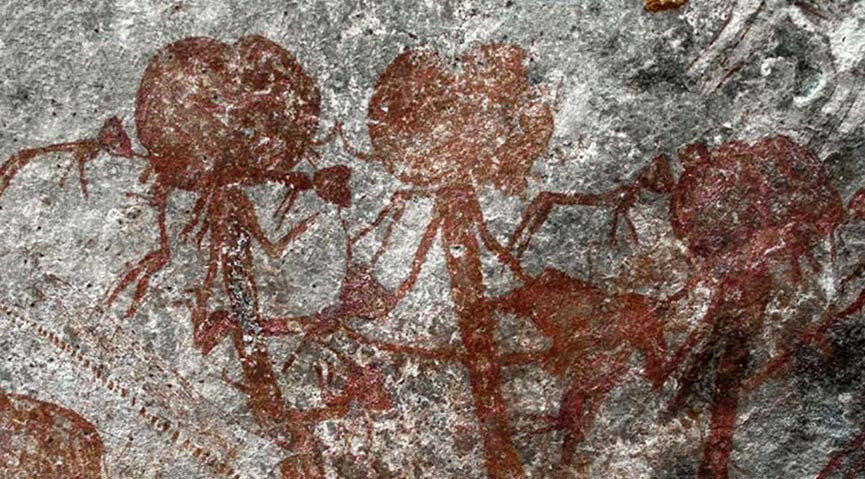Tanzanian rock art reveals trios of mysterious anthropomorphic figures
It was recently discovered that the rock art was located at the Amak’hee rock shelter site in the Dodoma Region of central Tanzania found in June 2018. Most of the paintings were made with a reddish dye; there are also five white images.

Dr. Maciej Grzelczyk, a researcher at the Jagiellonian University in Cracow, Poland, says, “Most are in good condition, mainly due to a rock overhang that protects them from flowing water and exposure to excessive sunlight,”
The Amak’hee 4 paintings include depictions of humans, domesticated cattle, and giraffes.

“Particularly noteworthy among the Amak’hee 4 paintings is a scene that centers around three images,” the scientist said.
“In this trio, the figures seem to feature stylized buffalo heads. These shapes recall the central dip in the profile of the buffalo head from where the two horns rise and then curve outward away from the head, as well as the downturned ears.”

“Even though in the present religion of the Sandawe people — who are descendants of those who created the paintings — we find no elements of anthropomorphization of buffaloes, nor belief in the possibility of transformation of people into these animals, there are some ritual aspects that offer parallels,” he added.
“The Sandawe still practice the simbó ritual, the main element of which is entering trance states.” The paintings are estimated to have been made several hundred years ago.
“As there is currently no absolute dating of rock art from central Tanzania, it is difficult to specify the approximate age of the Amak’hee 4 paintings,” the researcher said.
“Due to degradation of the dye and a lack of, for example, motifs depicting domesticated cattle, it can, however, be assumed that they belong to the hunter-gatherer period, so they are at least several hundred years old.”


Motifs featuring trios of human figures are also observed at other rock art sites in central Tanzania.
“The paintings at the Amak’hee 4 rock shelter provide one example of the many rock art sites in the Swaga Swaga area that are locally known but unpublished,” Dr. Grzelczyk said.
“Further fieldwork surveys in this area will be carried out to add to the growing body of published data recording rock art sites in this region.”
